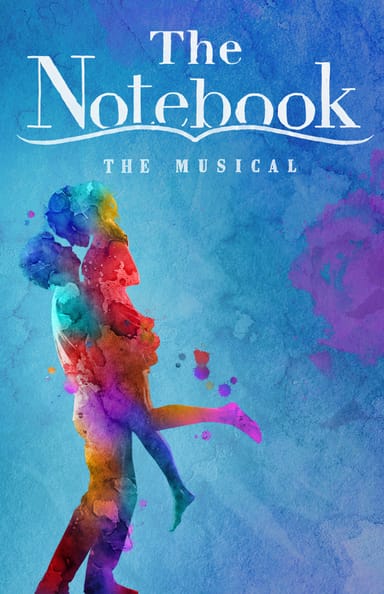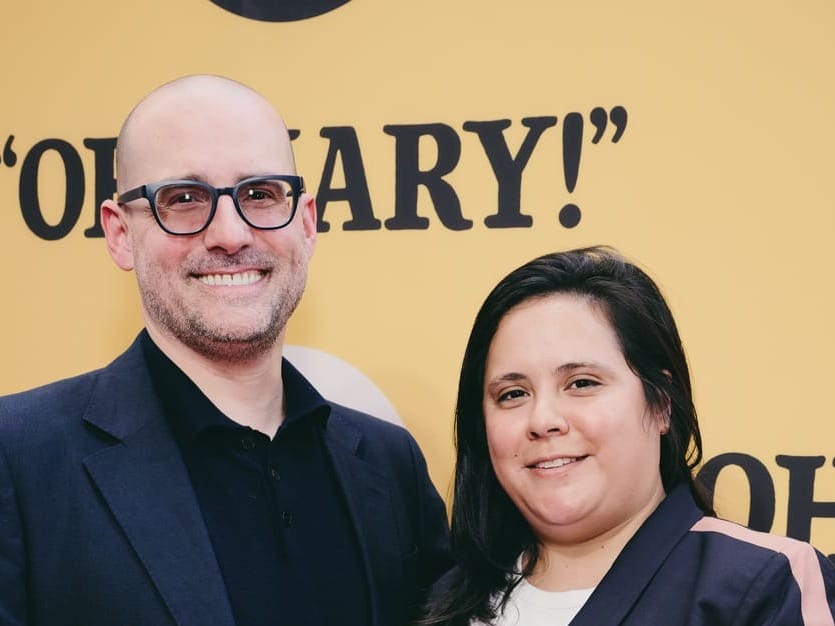By now, listeners of “Who Were the Comedian Harmonists? The True Story Behind Broadway’s ‘Harmony’” know the breadth of facts about the famed singing group, its members and the Germany in which they became famous. But how does nine podcast episodes-worth of history translate to a Broadway musical? And, even before that, how did writer Bruce Sussman encounter the Comedian Harmonists?
“It was March 31, 1991, and there was a New York Times review of a documentary that was running at the Public Theater. The Public used to have a screening room,” Sussman explained. “I watched three and a half hours of German documentary with subtitles — not my usual idea of a good time — and I came out of there gobsmacked. I couldn’t believe what I just saw. But more importantly, I couldn’t believe I didn’t know anything about it. And that’s when I realized that why I didn’t know anything about it is the story.”
Thirty years and many drafts later, “Harmony” bowed on Broadway. In the latest episode of the podcast “Who Were the Comedian Harmonists?,” Sussman reveals what those earlier drafts included and how he culled them to achieve the streamlined book for “Harmony” on the Main Stem.
“Each of the Harmonists was married or married several times, or had several girlfriends,” Sussman noted. “I, at first, had all those women in my first draft. All eight [women] had a great song. It was ‘my Bobby, my Harry, my—” they kept on referring to their Harmonists. Well, you needed a scorecard. It was just too many characters.”
Paring down the character list isn’t the only change Sussman made. The opening sequence used to begin in an entirely different way. For many years (and in multiple regional productions), the character of Rabbi was played only by a younger actor. The older version of Rabbi played to acclaim by Chip Zien was added after the pandemic. “There were so many things that I could have done, but I had to make choices,” Sussman said. He breaks down the logic behind those choices — and his collaboration with composer Barry Manilow — in Episode 10.
But writing the script and score are only the starting point of a musical. Now, the creators had to realize it in three dimensions for the stage.
With the introduction of Zien as Rabbi (and Danny Kornfeld as Young Rabbi), “Harmony” became a memory play. Scenic designer Beowulf Boritt came up with the idea to set the musical inside a mirrored black box set. “It fractures reflections, and begins to distort the reflections and break them in a weird way, the way memory does, the way we misremember things or remember in odd detail or you’re thinking about something and suddenly there’s a slightly different perspective on it,” Boritt explained. It also helped the team solve another problem.
In one scene, Hitler boards a train that the Harmonists are riding. “We were wrestling with, ‘How do you present Nazis on stage?’” Boritt said. “At one point, Warren said, ‘What if there was some way to do it with video?’ And that led me to think, honestly, about our phones. That’s where fascism comes from these days. That’s where we experience it. It’s coming out of that black mirror of our phones, and it led very directly to this set of black mirrors.”
The black shine of the set also imbued the stage with a polish and prestige, like the Comedian Harmonists themselves — or the grand piano they’d gather around.
Meaning is embedded in every inch of “Harmony” — meaning and accuracy. “One of the big things that Bruce Sussman and Warren [Carlyle] wanted us to hone in on was making sure that all the uniforms were correct and all of the tails were correct — that the boys costumes that they were going to wear for concert wear were as accurate as possible,” said co-costume designer Ricky Lurie. Lurie and co-designer Linda Cho completed painstaking research to ensure the time-period appropriateness of every costume piece, down to the width of their lapels. With a black box-style set, it was crucial that the costumes indicate late 1920s/early 1930s Berlin to establish “when” and “where.”
Likewise, lighting designers Jules Fisher and Peggy Eisenhauer were concerned with period accuracy. “When the Comedian Harmonists are in performance, there shouldn’t be anything there in terms of lighting that’s anachronistic,” Eisenhauer explained. They had to think, “What would the lights have been able to do in that year?” and use nothing more than that.
Of course, intrinsic to the Comedian Harmonists’ story is their sound. As such, achieving a crispness and clarity was the first task for sound designer Dan Moses Schreier. “The sound design for clarity and to be able to enjoy the music and to hear every single word takes a lot of work,” Schreier said. “What was special and different about ‘Harmony’ versus other shows that I’ve designed is: the mix is one of the most difficult mixes of the shows that I’ve done.”
“Each [song] is a very different kind of number,” Schreier continued. “So every time that they sang as an ensemble, the mix was different. And even within the song, who leads the song? Who’s got the solo changes? So the mix is extremely active for every one of their numbers.”
Together, the team created a theatrical experience of a story that would have been relegated to the margins of history.
Learn more about “Creating ‘Harmony’ From History” in the final two episodes of the podcast “Who Were the Comedian Harmonists?”
Want to know the specifics of the fortune and fate of the group and its members? Listen to the full debut episode of “Who Were the Comedian Harmonists? The True Story Behind Broadway’s ‘Harmony’” with the player above or download and subscribe to the podcast on platforms including Spotify and Apple Podcasts. New episodes of “Who Were the Comedian Harmonists?” (produced by Broadway News and “Harmony” A New Musical and edited by Daniel Piñeiro) are released on Wednesdays.
Listen to the podcast’s trailer here.
Listen to “Episode 1: The Comedian Harmonists” here.
Listen to “Episode 2: Harry Frommermann, the founder” here.
Listen to “Episode 3: Erich Collin, the intellectual” here.
Listen to “Episode 4: Josef Roman Cycowski, the peacemaker” here.
Listen to “Episode 5: Robert Biberti, the manager” here.
Listen to “Episode 6: Ari Leschnikoff, the nightingale” here.
Listen to “Episode 7: Erwin Bootz, the virtuoso” here.
Listen to “Episode 8: The Women Beside the Men” here.
Listen to “Episode 9: The Celebrities in Their Circle” here.


























































